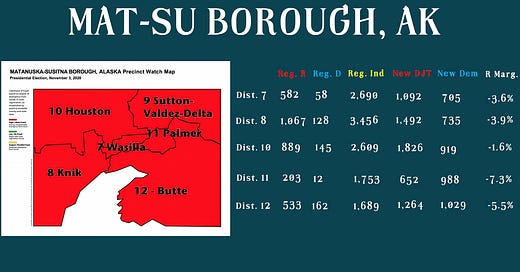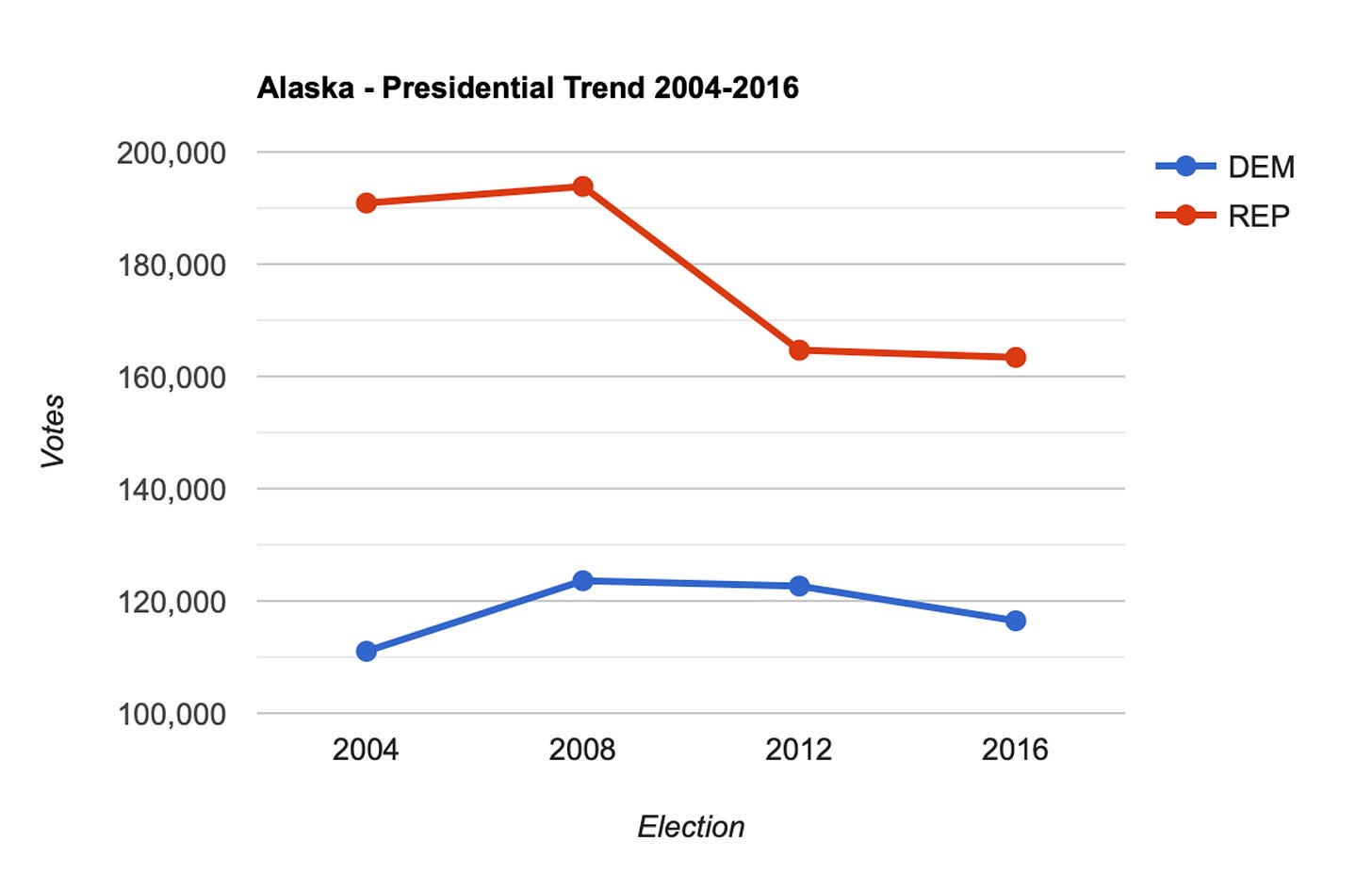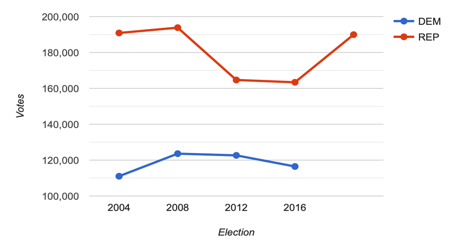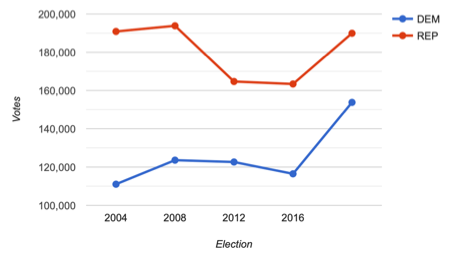This week found me back in the home state of my final Army duty station, Alaska. This vast wilderness paradise lives in the imaginations of many through legend tales and is truly a crown jewel of human civilization. The people are ruggedly independent, and generally insulated from most of the issues plaguing the “Lower 48.” I was able to learn this in just a year and a half as an intelligence officer with the 1/25 Stryker Brigade Combat Team.
Unfortunately, Alaska is on track to become another Oregon. Many found it curious that the media waited several days to call Alaska for Donald Trump in 2020, but in hindsight, it makes perfect sense. Alaska appears to have been the putter in the golf bag for the fraudsters if a particular senile political retread needed to find three skinny electoral votes. If California is the mother ship that exported all its practices through the states in 2020, Alaska is a Stage IV electile dysfunction patient that managed to fight off a substantial infection in 2020 but remains vulnerable for future relapses, making it possible for the state to either go “blue,” or re-elect anti-American frauds like Lisa Murkowski (M-U-R-K-O-W-S-K-I).
Allow me to account for the most severe symptoms plaguing Alaska’s elections:
1) Permanent Fund Dividend (PFD) automatic registration – On November 8, 2016, the same night Donald Trump was elected, Alaska’s voters approved Ballot Measure 1 (15PFVR), which automatically registers applicants for the PFD. The damage will be unveiled later in this article.
2) Ranked Choice Voting (RCV) – approved in 2020, and the first election using it will be run later in 2022 for the vacant U.S. House seat left behind by the deceased Don Young. Ranked Choice Voting allows a pathway for extreme candidates to supplant candidates who are most likely to be elected with strong pluralities, and practically entrenches incumbents in Democrat strongholds.
3) Experimentation with mail-in voting – as with RCV, mail-in voting will be the method for the U.S. House race coming later in 2022. With Alaska’s hostile climate and influence from west coast neighbors, it is only a matter of time until a full-on blitz begins to entrench mail-in voting.
Alaska at a Glance – 2004 to 2016
Alaska has not voted “blue” since 1964, when Lyndon B. Johnson won it in a national landslide. Since then, it has been solidly Republican. In the modern era, George W. Bush won it by over 25 points in 2004. Obama had a strong gain of 13,000 votes in 2008, but thanks to Sarah Palin’s presence on the ticket, McCain managed to avoid the same vote implosion he had in nearly every other state.
Things got weird in 2012, with Romney cratering nearly 30,000 votes. Some of this plunge is an organic fallaway from the Bush reelection high in a state with limited population growth (just 23,000 net new residents from 2010-19 per latest census), but Ron Paul really made inroads in Alaska and tapped into a fiercely independent sentiment in the electorate. Still, Obama plateaued, and Clinton declined further in 2016, as Trump himself was slightly down from Romney.
In 2020, Trump skyrocketed by 27,000 votes, getting himself back to landslide levels for Republican candidates. The Democrat trend is clearly down, and with Alaska progressives sympathetic to “democratic socialism,” Trump’s gains and the continued Democrat declines suggest a Biden vote total around 110,000 votes, or even below.
Instead, Biden gained 37,000 net new votes, nearly 1.4 net new votes for every new vote for Trump. Trump managed to drop Anchorage Borough from the GOP column for the first time since 1964, despite having carried it in 2016 with 5,000 fewer votes than Mitt Romney, and with Democrats more opposed to the oil industry than at any point in history.
These sudden changes are undoubtedly the result of no-excuse mail-in balloting with filthy voter rolls. In 2020, Alaska mailed out three times more absentee ballots than the three previous elections combined. The glut of independent voters registered because of the PFD ballot measure in 2016 clearly created a credit line of new voters from which mail ballots could be harvested from, including those residing out of state.
Alaska organizes by State House Districts, of which there are 40, and records votes in those categories. They were all re-drawn and used for the first time in the 2016 presidential election; therefore, it is difficult for me to make trend analysis make sense for anything outside of Juneau or Anchorage, which have the same basic organization as they’ve always had.
From 2013-2016, Alaska registered 22,178 net new voters. 50.9% registered as either Republican or Democrat, and 49.1% registered as other party/non-affiliated. The impact of the PFD measure is severe – from 2017-2020, Alaska registered 68,440 net new voters, of which 92% were other party/non-affiliated, and just 8% Republican or Democrat. These changes resulted in just 6 of 40 House Districts trending more Republican in registration (19, 35, 37, 38, 39, 40), despite the Republican incumbent’s booming vote totals in his reelection campaign suggesting the registration numbers are artificially manipulated.
Take the Matanuska-Susitna (Mat-Su) Borough for instance. It is the heartbeat of the conservative movement in Alaska and the home of the strongest activists in the state. Trump won it by a mile in 2016 and blew out his own vote totals in 2020. In District 11 (Palmer), the Republicans out registered Democrats 17:1 in Trump’s term, but thanks to the PFD measure, 1,753 “other/non-affiliated” were registered, pushing the registration advantage artificially to the left. In a district that gave over 66% of the vote to Trump in 2016, Trump gained 652 new votes, but was outpaced with 988 new Biden votes, sending Palmer more than 7 points in favor of the Democrats.
This is the model throughout the state, particularly in large areas like Fairbanks and Anchorage. Once Georgia and Pennsylvania were snagged for Biden after several days of counting, the media allowed Alaska to go into its natural Republican column. The three electoral votes were no longer needed, like they would have been had Biden been stuck in a 269-269 tie with Trump. The certified totals have Biden just 10,000 votes short of Trump’s 2016 winning total. Who can tell how long votes would have been counted in Alaska had the election hinged on The Last Frontier?
Alaskans must expend all resources to reverse the PDF loophole and prevent the state from turning to mail-in elections. If they don’t, they will give way to a blue state that implements the California model from one corner to the other, with no way to reel it back in.










On the heels of the AZ robbery it was an easy take for the AK is the putter in the golf bag analogy.
Excellent work Seth. Although this sucks for us. I’m glad we’re awakened now and ready to fight this battle. They call the Mat-Su the RED WALL and we must keep it that way!